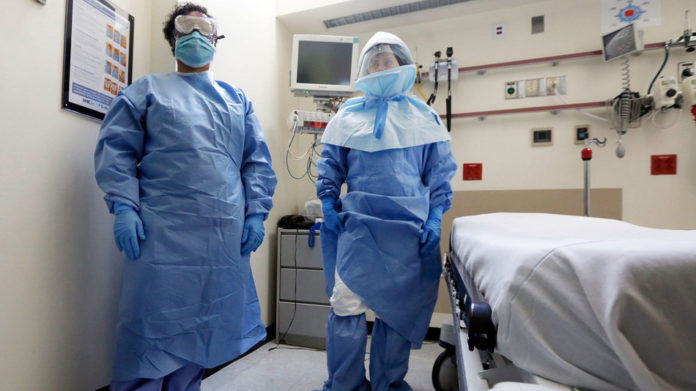How Prepared Is New York City to Handle Ebola?

The health care worker who recently returned from Guinea and is experiencing symptoms consistent with the Ebola virus is not the first to be tested at Bellevue Hospital. In fact, the hospital, as well as city, state and federal officials, have been working for weeks or more to ensure the city is ready to identify and treat Ebola cases.
This preparation reflects the fact that the longer the outbreak rages on in West Africa, the more likely it is that a patient would wind up in Western cities, including New York.
On Oct. 15, the state designated Bellevue Hospital Center as the facility to receive Ebola patients from among the city’s 11 public hospitals, and to receive transferred patients from other hospitals as well, in the event that any Ebola cases occur in the city.
According to a statement from the New York City Health and Hospitals Corporation, the hospital has four single-bed rooms in its infectious disease ward to treat “high probability or confirmed Ebola cases.” This part of the hospital also has a new laboratory that can test for Ebola, separate from the rest of the hospital’s labs, to handle Ebola blood samples.
Because the virus can be spread through contact with an infected person’s bodily fluids, careful handling of blood and other samples is necessary.
According to the statement:
The hospital is particularly well suited due to its long history of being on the front lines of epidemics and emerging public health threats, and managing an isolation unit for diseases, such as TB, for many years with support from and collaboration with the City Health Department.
Three other hospitals in New York City have also been designated by the state to treat suspected and confirmed Ebola cases, including Mt. Sinai and New York Presbyterian in Manhattan and Montefiore in the Bronx, according to Governor Cuomo’s Ebola preparedness plan.
None of these hospitals, including Bellevue, has an isolated biocontainment unit like those that have treated patients at Emory University Hospital in Atlanta, Georgia, and Nebraska Medical Center in Omaha, Nebraska.
Those specially-designed units can only hold nine patients at the same time.
The American public may not have much faith in ordinary hospitals to treat Ebola, considering that the only non-specialized hospital to treat Ebola patients, Texas Health Presbyterian Hospital Dallas, allowed the virus to spread to two nurses who worked on the original patient, Thomas Eric Duncan, who died of Ebola on Oct. 8. Both of the nurses are now being treated in a biocontainment unit.
The probability of an Ebola case in New York is considerably higher than it is for many other cities in the U.S., given that two of the city’s international airports — JFK and Newark — are key gateways for travelers to and from West Africa, via stops in Europe or elsewhere in Africa.
“New York City is a frequent port of entry for travelers from West Africa, a home to communities of West African immigrants who travel back to their home countries, and a home to health care workers who travel to West Africa to treat Ebola patients,” The Centers for Disease Control and Prevention (CDC) said in a report on Oct. 17.
“Ongoing transmission of Ebolavirus in West Africa could result in an infected person arriving in NYC,” the report said. However, the chance that a New Yorker who has not traveled to an Ebola hotspot would come down with the virus is “extremely slim,” since the disease is only spread through direct contact with an infectious person’s bodily fluids.
In addition, the New York Health Commissioner issued a “Commissioner’s Order” to all hospitals and ambulance services in the state, “requiring that they follow protocols for identification, isolation and medical evaluation of patients requiring care.”
The state has been conducting “unannounced drills” at hospitals and health care facilities to test preparedness for handling possible Ebola cases. The state has also involved the Metropalitan Transit Authority, which operates the city’s subways and buses, in training for encountering possible Ebola patients.
A mass Ebola training for health care workers, which included demonstrations for putting on and taking off protective equipment, took place in the city on Oct. 21.
According to new guidelines the CDC issued on Monday, there are 30 steps health care workers have to take every time they treat a patient with Ebola or Ebola-like symptoms.
At hospitals like Bellevue, actors playing the role of patients with Ebola symptoms have been part of the drills, and the city’s 911 operators have been told to ask people who call in with Ebola-like symptoms if they have recently traveled to West Africa, according to the Guardian.
As of Thursday, there have been nearly 10,000 cases of Ebola in West Africa, along with about 4,900 deaths. However, these figures are likely to be underestimates, since the lack of treatment facilities and other circumstances are causing many patients to go uncounted.
Kari Paul contributed reporting for this story.
